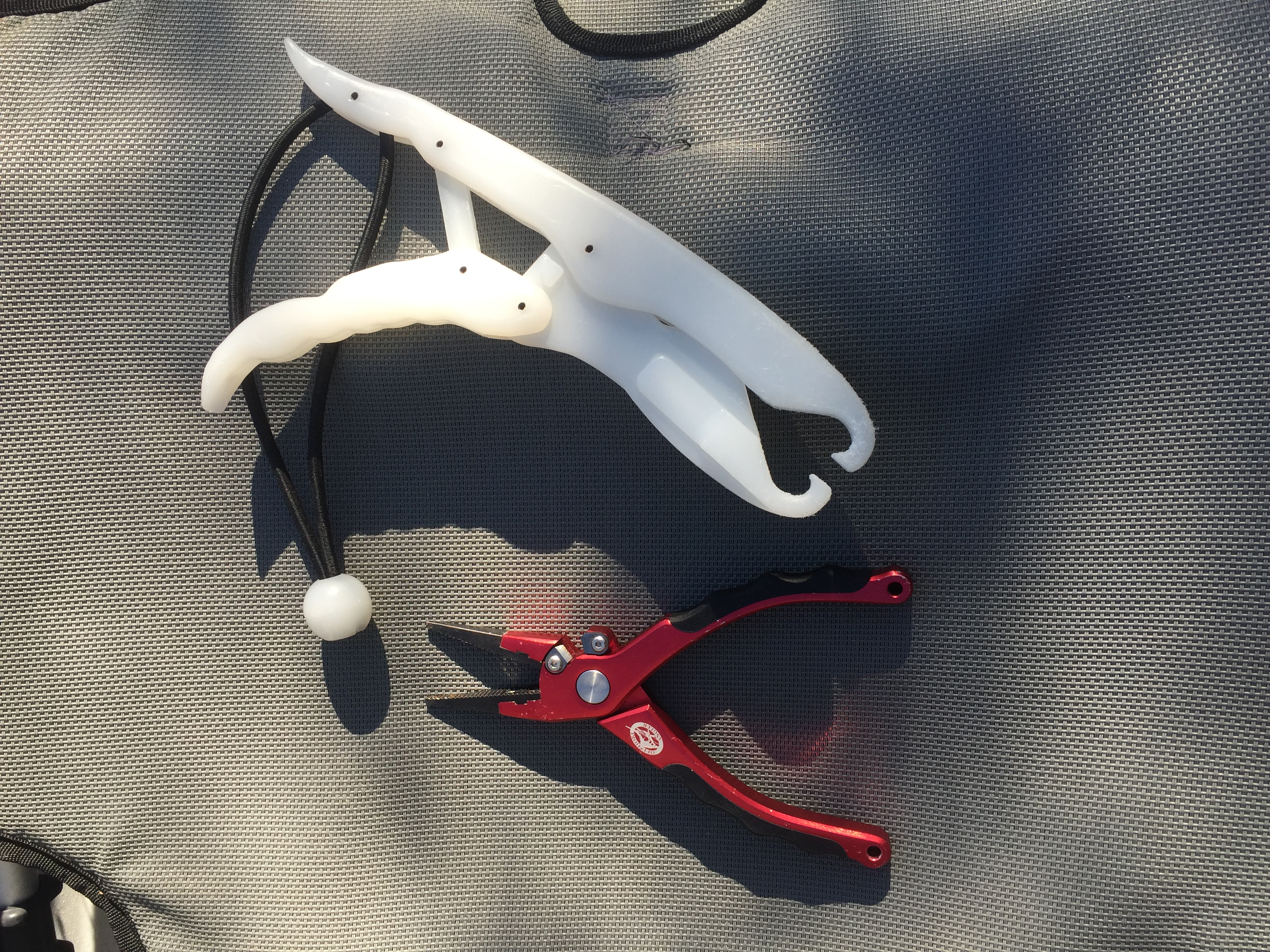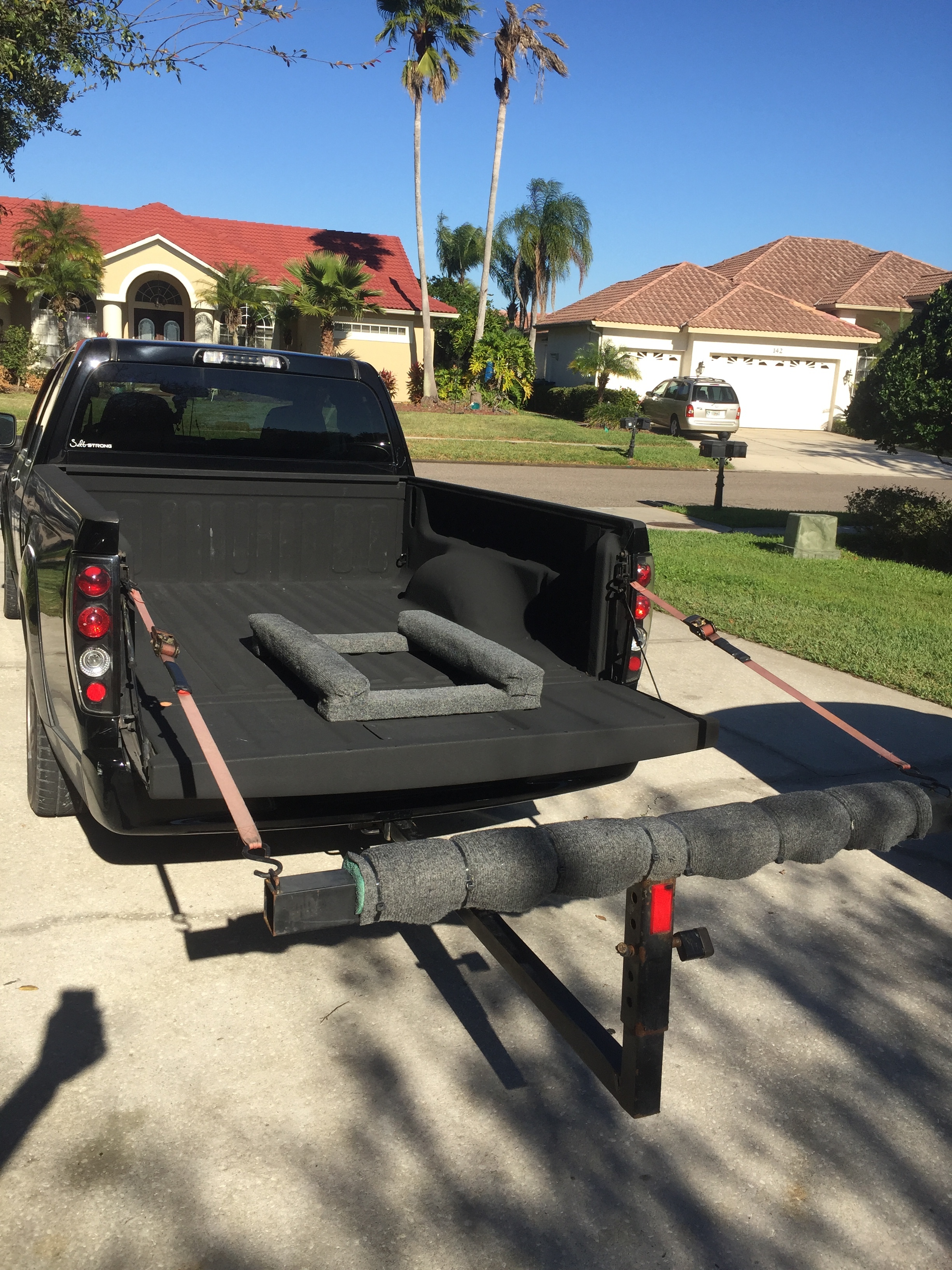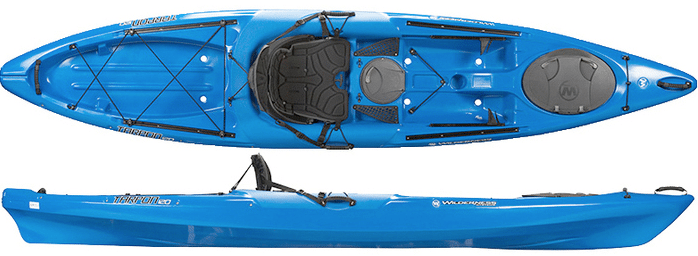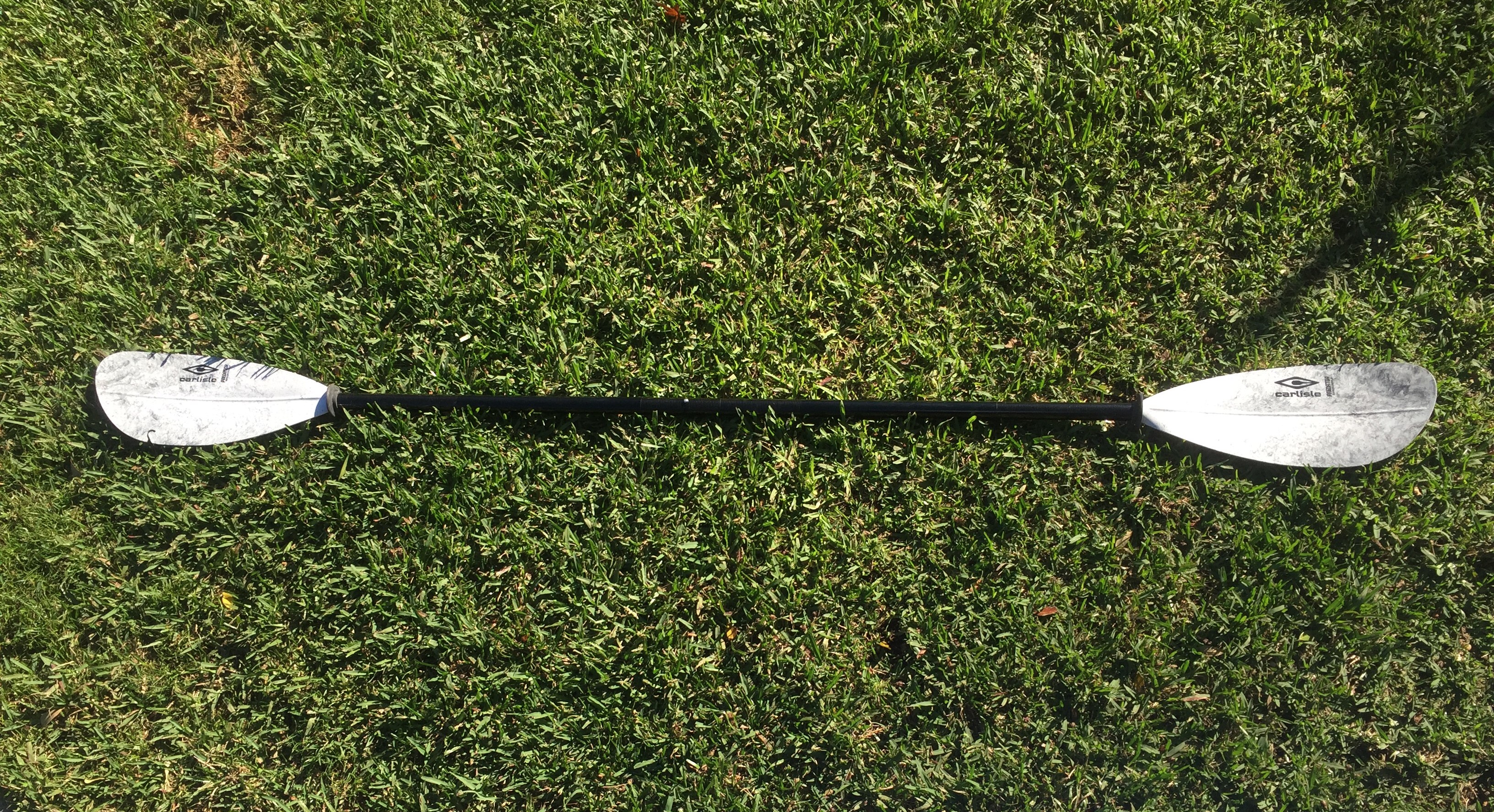The Ultimate Guide To Buying A Fishing Kayak (Must Read Before Purchase)
- By: Joseph Simonds
- on
- Found In: Fishing Tips, Inshore Fishing, Kayak Paddleboard Reviews

Are you into kayak fishing?
Perhaps thinking about upgrading your kayak or accessories?
Or perhaps you are just starting to explore fishing from a kayak and want to make sure you don’t buy something you don’t need.
Well, you came to the right blog.
Introducing the ULTIMATE guide to buying a fishing kayak.
We’ve had a lot of questions from the Salt Strong audience about buying kayaks for fishing (in particular, saltwater inshore fishing).
Questions such as:
- What’s the best type of fishing kayak?
- What accessories do I need on my kayak?
- How to select the best paddle for kayak fishing?
- What kind of anchor do I need for my kayak?
- The biggest MISTAKES anglers make when buying a kayak.
So in this article, we’ll cover all of that (plus some).
But first, let’s cover the basics.
What Is A Fishing Kayak?
By Tony Acevedo
Guess what?
Fishermen were catching fish from kayaks way before we were born!
Fishing kayaks date all the way back to the early Eskimos and Native American tribes.
What is interesting is that they were originally used for hunting due to their stealth nature, and then people realized how ideal they were for fishing.
In modern days, hunting and fishing from kayaks has been looked at by some type of “extreme” means of performing these tasks, but in reality, our ancestors did this on a daily basis. Not until recently has the method of kayak fishing taken the fishing industry by storm.
The kayak fishing industry has exploded due to the following reasons:
- kayaks are affordable
- lightweight
- easy to store and transport
- highly effective to fish out of
- super quiet to sneak up on fish
- no gas
- no batteries
- no maintenance
- no payments
Note that although a few brands control a big chunk of the kayak market, here isn’t necessarily a branded “Inshore Fishing Kayak”.
Pretty much all kayaks are capable of being customized to your own needs for effectively fishing inshore waters.
Let’s go ahead and take a look at some key factors when choosing a kayak for fishing.
Types of Fishing Kayaks
When choosing a kayak to fish from, the first consideration is what type of kayak do I choose.
Here are the main options you will have:
Sit-on-top Kayaks
Sit-in Kayaks
Sit-on-top kayaks are going to be your #1 choice for fishing for the following reasons:
- They are easier to get in and out of pretty much in every instance:
- when launching your kayak
- if you happen to fall out…
- or when the need arises to get out and stretch
- They are self-bailing, which means when water gets in, it goes right back out and keeps you from flooding.
- You sit higher, allowing for a better view of the water
- Many seating options for your comfort
- More storage options and access to your gear
- Ability to stand up
- Easy to add accessories and customize
Sit-in kayaks are NOT very fisherman friendly for the following reasons:
- Can be difficult to get in and out of
- Prone to flooding – when water gets in, it has nowhere to go
- You have a very low vantage point sitting below the surface of the water
- Not as easy to customize to fit your needs
Even though sit-in kayaks aren’t the best option for kayak fishing, they are still a means of getting you mobile on the water.
They are also cheaper than the sit-on-tops.
So if this is all you can get away with, then by all means, go for it! This is the original kayak style and our ancestors had no issues with hunting and fishing from them.
Pedal-Drive Kayaks
There is one more style of kayak that has become very popular for anglers called the pedal drive kayak.
These kayaks are propelled using your legs to “pedal” which will either turn a propeller underneath the kayak, or move fins underneath the kayak.
These are all sit on top styles of kayaks but also have their own pros and cons, so let’s go ahead and take a look at these.
The Pros:
- Hands-free operation (aside from controlling the rudder with one hand for turning)
- Ability to cover more water and distance
- More comfort for those with back or shoulder/arm issues
- Forward and reverse capabilities (useful for trolling, fishing in current, fighting large fish)
- Mostly all are capable of standing up in due to their width and stability
The Cons:
- Expensive – Prices range from $1800 to more than $3000
- Heavy – Most paddle kayaks range from 40-80lbs, whereas pedal drive kayaks can start at 100lbs and up, not including gear
- Not very shallow water friendly. If fishing in a foot or less of water (some need more clearance) you will have to pull the pedal system up and use your paddle. This can be a burden especially with the kayak being heavy and bulky. This leads to them not being very paddle friendly as well.
So when choosing a kayak to fish inshore, take the above factors into consideration, and also keep in mind the following:
- Length – you will want a kayak no shorter than 10ft – longer kayaks track better (ride straight)
- Width – the wider the kayak, the more stable it will be. However, you will lose speed.
- Weight Capacity – Choose a kayak with a weight capacity that is at least 100lbs more than your own body weight and the weight of all your gear combined
- Don’t purchase something you can’t handle. Factor in how you will be transporting and storing your kayak.
Last but not least, TRY BEFORE YOU BUY.
You don’t purchase a car or boat without testing it out first, right? Same is true for kayaks as they are not all created equal.
Note: Most retailers will not accept returns of used kayaks either.
On the plus side, kayaks retain their value very well and can be easily sold online to get back most, if not all, of your money.
How To Select The Best Kayak Paddle
When choosing a kayak paddle, there are TWO BIG factors that you must be aware of:
- Length of the paddle
- Weight of the paddle.
Here are some simple kayak paddle rules:
- If your kayak paddle is too long, you will find yourself zig-zagging as you paddle.
- If it is too short, you will find yourself having to reach to put the blade in the water.
- If it’s too heavy, you aren’t going to be able to paddle as far or as long as you want
You may also tend to hit your knuckles on the sides of your kayak if your paddle is too short.
The general rule of thumb when choosing a paddle for kayak fishing is the wider your kayak is, the longer the paddle will have to be. Their sizes are measured in centimeters and range from 210cm – 260cm.
Here is a standard chart that can assist you in choosing the proper length paddle.
Of course the taller you are, go with the longer paddle for the given kayak width.
If your kayak paddle is heavy, you will quickly fatigue yourself on the water, and can also injure yourself.
The most affordable and lightweight paddle you can purchase would be an all fiberglass paddle which can range from around $60 – $100.
However, I do NOT recommend going cheap on your paddle!
Your paddle is your means of getting back home at the end of the day. You wouldn’t purposely go cheap on a boat motor, so don’t do it with your paddle.
Notes on kayak paddles:
In addition to fiberglass paddles, there are also paddles made of carbon fiber, which are the lightest on the market. They also carry a pretty big price tag ranging from $200 to nearly $500. As with most price ranges, the higher the price the better the quality.
Here is a standard fiberglass paddle
Accessories for Inshore Fishing Kayaks
Today, there is pretty much an endless amount of different accessories out there to outfit your kayak for fishing.
You may see some kayaks decked out with multiple rod holders, fancy lights, and all sorts of gear that can actually end up being more of a distraction and space invader than anything else.
Accessories aren’t just limited to what you would attach to your kayak, but what you would need for a productive day on the water.
My advice: Keep it as simple as possible, yet effective.
The following are some of the top accessories to have for an effective inshore fishing kayak:
- Rod holder mounted in front of you – this puts your rod in an easily accessible location, and also makes it easier for you when de-hooking fish, tying knots, etc.

- Rod holders behind you for storing extra rods – Most fishing kayaks will have flush mount rod holders just behind the seat. If not, you can easily add your own either by attaching rod holders to your kayak, or simply adding PVC pipe tubes to a milk crate that you may use for tackle storage.

- Tackle Storage – this can be anything from a milk crate behind you in the rear tank well or even just a dry bag to keep your tackle boxes in.
- Tools – the main tools you should carry are pliers, scissors to cut braid (some pliers have a braid cutter on them), and fish grips and/or a landing net

- Anchor Trolley – this allows you to change your position when anchored by simply pulling on a rope. Highly useful when fishing in wind or current.
- Anchor Pin – When fishing inshore, you are typically in water less than 5ft deep. An anchor pin is the quietest way (and most efficient) to anchor in the shallows. When combined with an anchor trolley, you have yourself an awesome rig for anchoring your kayak.
Attaching Equipment To Your Kayak
Before attaching any accessories to your fishing kayak, take it out for multiple test runs.
This allows you to get a feel for the proper placement of accessories so that they are fully functional and not in your way (or too far out of your reach).
The best example would be a rod holder mounted in front of you. If it is too close, it will get in the way of your paddling stroke. If it is too far, it will be inconvenient for you to have to reach for it (and create any unnecessary noise that can spook fish due to having to move around too much)
The great news is that it’s very simple to install your own accessories.
Just be sure when installing rod holders that they are on a nice flat surface. This helps to avoid them leaning and possibly cracking the hull of your kayak, and also stretching out the holes that the screws are in causing water to enter your kayak.
Always use stainless steel hardware when installing accessories. This will save you from having to replace rusted out screws, nuts, and bolts. Saltwater is very corrosive and stainless steel is most resistant to corrosion.
This will save you from having to replace rusted out screws, nuts, and bolts. Saltwater is very corrosive and stainless steel is most resistant to corrosion.
Whenever possible, always use a marine grade silicone sealant in any holes that you may put a screw or bolt into.
Again, this helps with keeping any excess water from entering the hull of your kayak and also gives some extra adhesion for your equipment.
Tips On Buying A Fishing Kayak [VIDEO]
How To Transport Your Kayak
No matter what type of vehicle you drive, whether it be a car, truck, or SUV, there are ways to transport your kayak.
The most important factor is whether you are able to physically handle your kayak or not.
Definitely take this into consideration when purchasing a kayak. Small trailers are available to transport your kayaks and are best suited for heavy, bulky kayaks, such as the peddle driven types, which can weigh 100lbs or more.
This is also the best option if you just aren’t physically capable of throwing a kayak on top of your vehicle without damaging it, or yourself.
Important Note: remember that trailers must be registered, which can be another expense.
First, let’s talk about the different methods of transporting and what to consider when transporting your kayak.
The most standard method of transporting is just by strapping the kayak down to your vehicle’s roof rack. While this sounds pretty simple, be sure that you are securing it safely while also protecting it from damage.
Use foam or pool noodles on the crossbars of your roof rack so the metal does not dig in, dent, or crack the hull of your kayak. This is recommended for any method you may use for transporting. Plastic strapped down to metal is a recipe for disaster. Protect your investment!
Related Video: “Simple Trick To Loading A Kayak On An SUV By Yourself” (see it here now)
Also, be sure to strap your kayak with the top facing down since it is a flatter surface than the bottom.
If at all possible, try to avoid using the “ratcheting style” tie downs. You can end up over tightening them which can damage your kayak.
The best options are the “lashing” style tie downs in which you just pull on the strap for it to tighten.
In addition to just using your crossbars, there are kayak “cradles” that can be mounted on to your crossbars if you prefer to have your kayak facing upright, or if your kayak doesn’t allow for upside down transport (accessories mounted on the kayak are in the way, etc.)
There are also molded foam blocks that can be placed on the roof of your vehicle if you do not have a roof rack. These can also be used on your crossbars.

Possibly the most convenient way of transporting a kayak is by using a pick-up truck. It’s low to the ground and they all typically have hooks that allow for you to easily tie down your kayak.
As I mentioned before, be sure to protect the bottom of the kayak if you are strapping it down.
You can lay a couple thick pool noodles down for it to rest on and then strap it down.
Or if you want to get creative, you could build your own type of rack for it to rest on as I did that you can see in the image below.
Note: I simply cut some 2×4’s and measured for it to fit within the channels underneath my kayak and screwed them together for my kayak to rest on. I then added foam to the top of the wood that the kayak would be resting on, then stapled some indoor/outdoor carpeting to it for the kayak to easily slide on.

If you have a very long kayak, or a short truck bed, you may want to purchase a truck bed extender (this will only work if you have a hitch mounted on your truck).
This gives extra support for the end of your kayak that is sticking out from the truck bed.
This also can act as a “ramp” to slide your kayak up into your truck bed. As you can see in the image below, I zip tied a pool noodle to the extender for extra protection and support.

How To Store Your Kayak
Now storing your kayak should not be overlooked. In fact, this is a critical part of owning a kayak.
Why?
This is probably where your kayak is going to be spending most of its time aside from being on the water. I’ve seen kayaks get destroyed (permanent warping from sitting on crossbars too long without use, rust from being in an open area near saltwater, etc).
There are multiple options for storing depending on how much space you may have.
Wall mounts are available and work great.
There are also systems to hang your kayak from the ceiling and pulley systems to get it up there.
Since I have the space (and my kayak is a little bulky to put on a wall or ceiling), I simply have my kayak sitting on the ground on top of the same rack I use in my truck bed.
It doesn’t put any pressure on the kayak so it doesn’t risk warping or getting damaged. The most important factor in storing your kayak is keeping it from being damaged.
Important note: If there is too much pressure on a single part of the kayak, it will damage over time.
If storing outside, be sure to have a tarp or some means of covering the kayak to protect it from the sun.
UV rays can weaken plastic and cause it to become very brittle and more susceptible to cracking. Also, be aware that when plastic heats up it becomes softer. So definitely make sure there aren’t any pressure points on your kayak if storing in areas of high heat, such as storage units, outdoors, garages, etc.
Conclusion

Kayak fishing is certainly one of the fastest growing segments in both freshwater and saltwater fishing.
Compared to boats, they offer tons of advantages:
- Kayaks are more affordable than boats
- Easier to load/store/transport
- Kayaks be launched in all kinds of places,
- Kayaks can go in really shallow water (as long as you don’t have your pedals in)
But I’ve also heard from way too many anglers that had regrets after buying certain kayaks or certain accessories.
In pretty much all cases, had they done more testing and tried their kayaks out longer, they could have avoided the issues.
Most kayak retailers will let you borrow or rent their yaks so you can test them out before buying. I encourage you to load it on your vehicle, fish out of it, and use it every single way (and place) you intend on using it once you own one before you commit to buying.
The best rule of thumb for buying a new (or used) kayak…
Try Before You Buy!
Best of luck out there.
Private Inshore Kayak Fishing Course
Finally, if you made it this far, we have a special offer for you (that ends Friday, January 27th at midnight).
If you are interested in catching more inshore fish from your kayak, then click here to see Tony’s private inshore kayak fishing course.
Otherwise, hope you got something out of this.
Please let me know if you have any specific questions or things I might have missed in the comment section.
Tight Lines!
P.S. – If you think any of your angler friends or fishing networks would like to see this, please Tag them or Share this with them. Thank you!
Related categories:
STOP WASTING TIME ON THE WATER!
Do what the “SMART ANGLERS” are doing and join the Insider Club.
Here’s what you’ll receive today when you join:
- Weekly fishing reports and TRENDS revealing exactly where you should fish every trip
- Weekly “spot dissection” videos that walk you through all the best spots in your area
- Exclusive fishing tips from the PROS you can’t find anywhere else
- Everything you need to start catching fish more consistently (regardless if you fish out of a boat, kayak, or land).



















I’ve found the kayak guides really useful and thought it’d be great to have a guide on boat buying. Covering topics like skiffs vs. jon boats, boat sizes for different fishing needs, choosing the right outboard and trolling motors, and the differences between aluminum and fiberglass boats and the advantages and disadvantages between these types would be super helpful for us anglers looking to invest in the right vessel.
I am new to Kayak fishing and this guide has been helpful. I own a double Tandem but am interested in purchasing a single fishing Kayak. I must decide which is best, Crystal River Florida. Joe DELAVEGA
Tony, have you ever had the coosa off shore? Launching from the beach going over the breakers? I’m trying to decide between the Old Town Salty, and the Cossa.
Tony, do you prefer pedal or battery powered kayaks? What about the Torqueedo electric motors?
Tony, my wife also likes to fish, so I want to buy a 2-man kayak with foot pedals. Do I sacrifice much in performance in the longer and heavier boat? Also, are you familiar with Brooklyn Kayaks and what do you think of them?
Thank you for the great tips, Tony. I do have one request. when are we going to see an actual in the water comparison of the Top Brands, and more specifically those with a propulsion feature like the Hobies and Jackson?? I would also like to recommend a separate but related discussion on Tackle Management in a Kayak with some options on size and must do’s.
What brand of anchor trolley do you guys like?
Hi Tony: I’ll be moving to the Sarasota area later this year. Do you know of a kayak store in Sarasota/Tampa area that has a try before you buy. I’m interested in a pedal kayak. thank you. DT
What is your opinion of a fish finder on a yak? I fish inshore mostly with a few bass fishing trips a year. You have the added weight, added expense, and hassle, do you think the advantages in shallow water is enough to overcome the cons. Lastly if you do, is there a model you believe is good for a kayak?
Thank you
Bob
Get a Hobie and be done with it already.